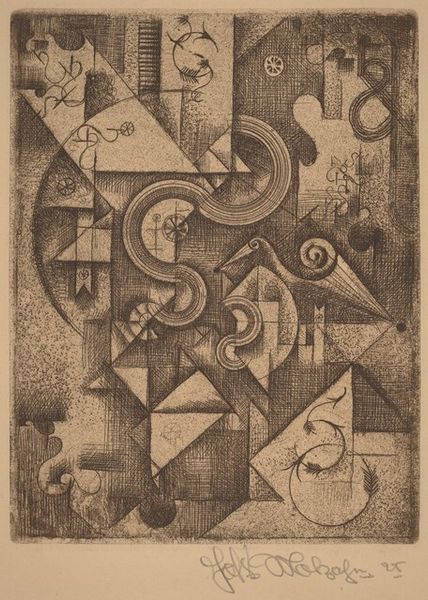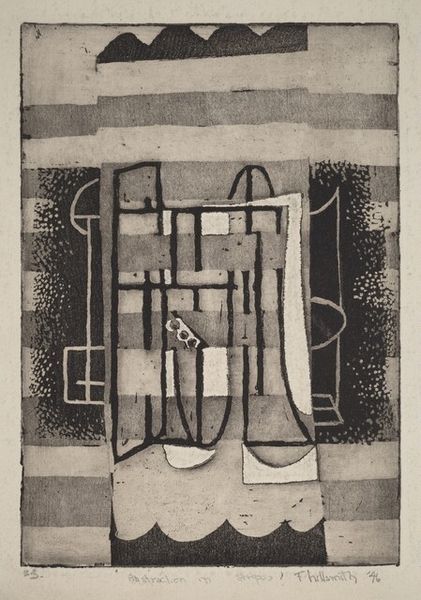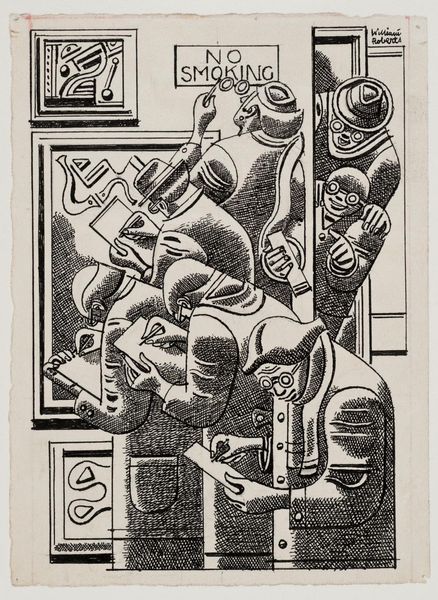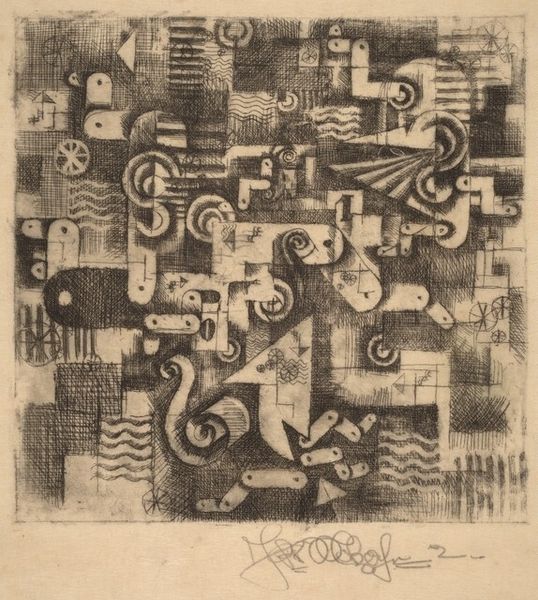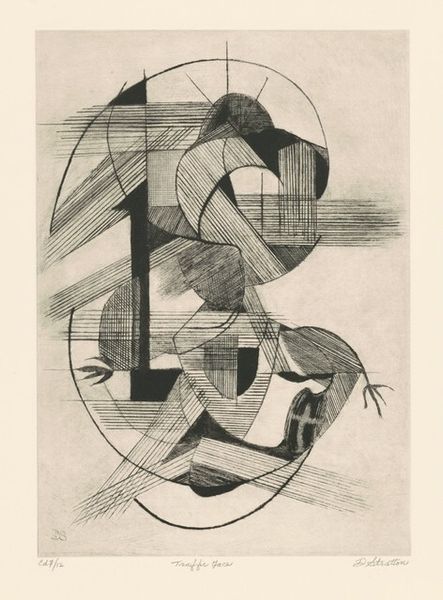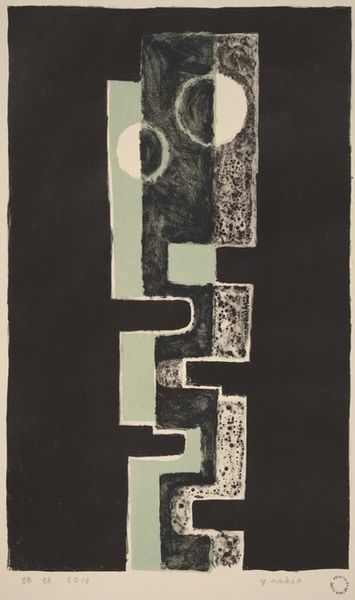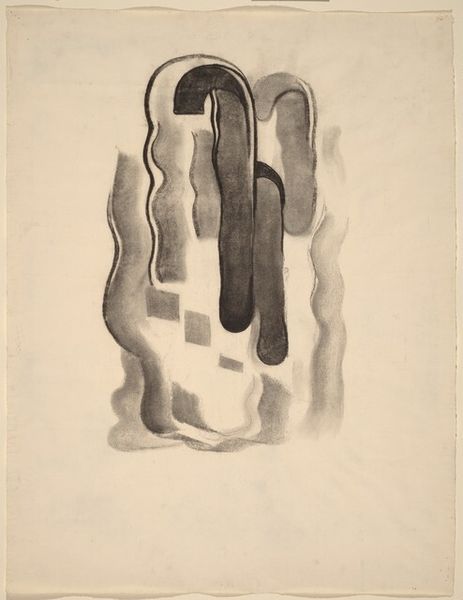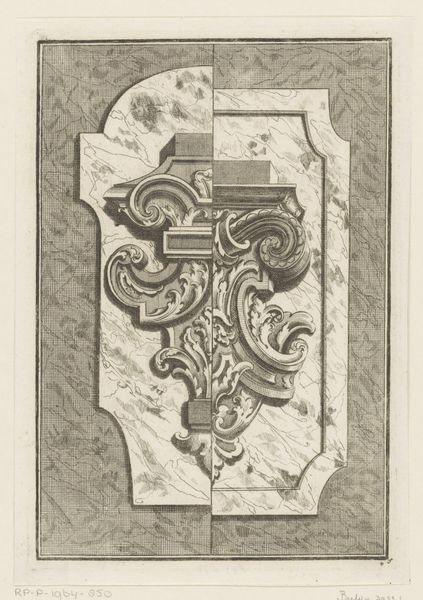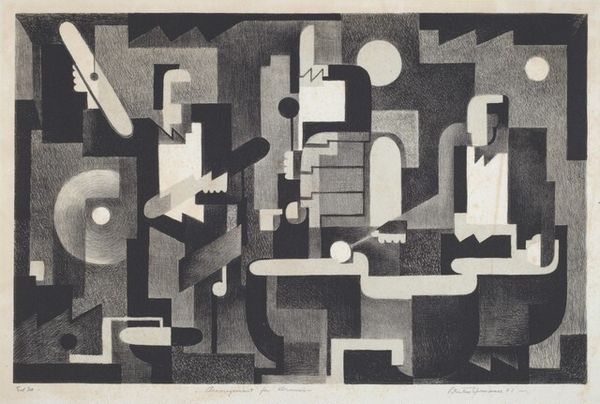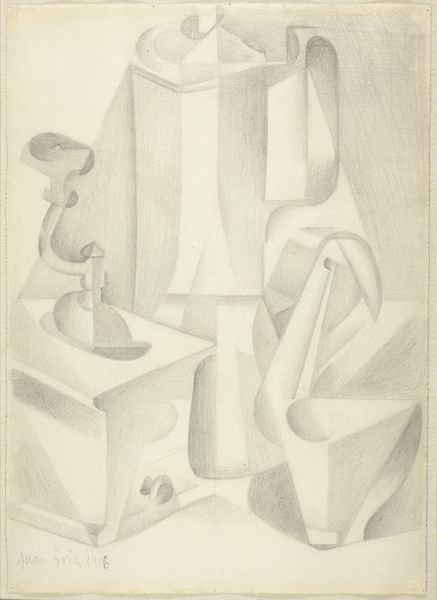
drawing
#
shading
#
portrait
#
drawing
#
type repetition
#
rippled sketch texture
#
typeface
#
chalky texture
#
3d shape
#
bold defined shape
#
geometric
#
embossed
#
abstraction
#
tonal art
#
cutout
Copyright: Roberto Aizenberg,Fair Use
Editor: This drawing is titled "Character" by Roberto Aizenberg, date unknown. The monochromatic abstraction shows this sort of puzzling, stacked form in a tight, boxy space. What do you see in this piece? Curator: Aizenberg created this drawing within a particular historical and political context—Argentina under a military dictatorship. It's vital to consider how state-sponsored violence shaped artistic expression during that era. The figure’s fragmented, geometric form and confinement speak to the psychological impact of oppression and censorship on the individual. What comes to mind when you look at the subject's ambiguous shape and blank "head"? Editor: I hadn’t considered the political implications so directly, but I see that now. I guess, superficially, it felt kind of Modernist, like deconstructed Cubism. It gives off a surreal vibe that feels stifling, especially with that cramped setting. Curator: Precisely! The artist draws on surrealism, but re-imagines it through the lens of lived experience of political repression. Think about it – the figure has lost recognizable identity, replaced by repeated geometrical motifs. How does that reflect on collective experience of terror? Does that resonate with contemporary ideas of identity and control? Editor: Absolutely. It reflects feelings of dehumanization, doesn't it? I was focused on visual qualities, but situating the work politically makes it more powerful. It’s more than just aesthetics; it’s about cultural critique. Curator: It is about making the personal political. When you think about the history, you will discover that there are parallels to be made between Aizenberg's drawings and the socio-political experiences of other marginalized communities. What seemed to be abstract is undeniably about lived experience. Editor: I’ll definitely carry that with me moving forward, the importance of understanding the intersectional narrative of the piece. Curator: Yes, the importance of an intersectional lens when viewing artwork cannot be understated!
Comments
No comments
Be the first to comment and join the conversation on the ultimate creative platform.
